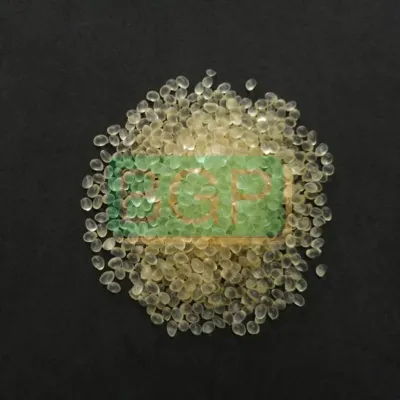In the world of adhesives, EVA hot melt adhesive stands out as a versatile and widely used solution. It's prized for its strong bonding capabilities, ease of application, and suitability for a broad range of industries and applications. If you're curious about how EVA hot melt adhesive is applied, this article will provide you with an in-depth understanding of the process.
Before we delve into the application process, let's get to know EVA hot melt adhesive a little better. EVA, or Ethylene Vinyl Acetate, is a copolymer adhesive known for its exceptional bonding properties. It is a thermoplastic adhesive that is solid at room temperature but turns into a liquid when heated.

The Application Process
1. Surface Preparation
For a successful application of EVA hot melt adhesive, proper surface preparation is essential. The surfaces to be bonded should be clean, dry, and free from any contaminants like dust, oil, or grease. Any residue on the surfaces can compromise the adhesive's effectiveness.
2. Choosing the Right Equipment
EVA hot melt adhesive is typically applied using specialized equipment. This equipment includes hot melt glue guns and dispensing systems. The choice of equipment depends on the specific application and the volume of adhesive required. It's crucial to select the right equipment to ensure a precise and efficient application.
3. Heating the Adhesive
EVA hot melt adhesive comes in the form of solid pellets or sticks. To apply it, the adhesive must be heated to its melting point, which typically ranges from 250°F to 400°F (121°C to 204°C). The heating process is crucial as it allows the adhesive to become a liquid, making it ready for application.
4. Application Techniques
There are various application techniques for EVA hot melt adhesive, depending on the requirements of the project. Some common methods include:
a. Bead Application
In this technique, a continuous bead of molten adhesive is applied along the bonding area. It is suitable for projects that require a strong and consistent bond.
b. Spray Application
Spray application involves spraying a fine mist of molten adhesive onto the surface. It is often used for projects that require a more even distribution of adhesive.
c. Ribbon Application
Ribbon application entails applying a thick, flat ribbon of adhesive to the bonding surface. This method is useful for projects that require a substantial bond area.
5. Bonding Process
Once the adhesive is applied to the surfaces, the bonding process begins. It's crucial to join the substrates while the adhesive is still in its molten state. The adhesive quickly cools and solidifies, creating a strong bond. Pressure may be applied to ensure proper adhesion, depending on the project requirements.
6. Cure Time
Hot melt adhesive typically has a quick cure time, which means that the bond becomes solid and strong within seconds to minutes after application. This fast curing time makes it ideal for high-speed production processes.
7. Quality Control
Quality control is a vital aspect of the application process. After bonding, it's essential to inspect the adhesive joint to ensure it meets the desired specifications. Any imperfections or defects should be addressed promptly.
Applications of EVA Hot Melt Adhesive
EVA hot melt adhesive finds application in a wide array of industries, including:
Packaging: EVA hot melt adhesive is commonly used in the packaging industry for sealing cartons, bonding labels, and securing product packaging.
Woodworking: In woodworking, EVA hot melt adhesive is used for edge banding, profile wrapping, and assembly of various wood components.
Automotive: This adhesive is employed in the automotive sector for headliner assembly, interior trim bonding, and wire harness assembly.
Footwear: EVA hot melt adhesive is used in the manufacturing of shoes and footwear, ensuring durable and long-lasting bonds.
Textiles: In the textile industry, this adhesive is used for seam sealing, fabric lamination, and various other fabric-related applications.
In conclusion, EVA hot melt adhesive is a remarkable adhesive solution with a versatile range of applications. Its effectiveness lies in its ease of application and quick curing time. Understanding the proper application process is crucial to harness the full potential of this adhesive in various industries. More details please contact raywincoating@163.com



Comments
Please Join Us to post.
0